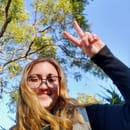“Hanukkah, oh Hanukkah/ come light the menorah/ let’s have a party, we’ll all dance the hora./ Gather round the table we’ll give you a treat/ sevivon to play with and latkes to eat”
The song “Hanukkah, Oh Hanukkah” is one of the first songs you learn in Jewish Religious school other than The Dreidel Song for Hanukkah. Hanukkah is misunderstood slightly by non-Jews. At its core, Hanukkah is not a gift giving holiday. However, gift giving has become common for North American Jews on Hanukkah because of the need to assimilate and feel connected with our non-Jewish, Christmas celebrating neighbors; it is not necessary or an essential part to the holiday. In truth there are four components to the holiday that are truly necessary, and those are as follows:
- The Story: Why We Celebrate
-
Within Jewish tradition there are four major categories of holidays: someone tried to kill us, we are alive, let’s eat, and trees. Hanukkah falls within three out of four of these categories (I’ll let you guess which ones). The story of Hanukkah takes us all the way back to B.C.E during the reign of King Antiochus Epiphanes in the ancient Seleucid Empire. During this time Antiochus and his people go to Jerusalem and start desecrating the big temple and outlaw Judaism and the practice of Jewish traditions. After a few years, this guy Judah leads the Jewish rebel group, the Maccabees, in a fight against the Greeks. Despite being vastly outnumbered with all odds against them, Judah and the Maccabees win the fight. When they come back to the temple, the Ner Tamid (light above the ark) isn’t lit. When they try to relight it, they can only find a small jar of oil that should last for only one night. A miracle occurs, however, and the small jar of oil lasts for eight nights and eight days, allowing the people to acquire more oil. For a more indepth story check out the writings in the book of Maccabees.
- The Menorah: What We Light
-
The main symbol of Hanukkah is a menorah, which can also be referred to as a hanukkiyah. A menorah holds nine candles. We light one candle a night plus one. The extra candle is called a shamash and we use that candle to light the rest of the candles for all eight nights. Overall, you use about 44 candles over the course of eight nights. Most menorahs have four candles on each side, with the shamash raised in the middle. However, you can find a plethora of different styles and designs depending on the tradition and family. Each night we light a candle to celebrate the oil that burned for seven nights longer than it should have, and honor the fight that Judah and the Maccabees fought.
- The Food: What We Eat
-
Traditionally for Hanukkah the foods eaten tend to be fried in oil. The most popular food items are Latkes and Jelly filled donuts (though any donut will do). These are the staples of the holiday and bring so much comfort to anyone who eats them. They are joy-filled foods that only add to the festivities of the holiday, and continue to honor the miracle that happened that night all those years ago.
- The Sevivon: What We Spin
-
The best thing to come from this holiday is the gambling, because what would we be if we didn’t start our kids young? Sevivon, more commonly known as dreidels, are squarish spinning tops that are used in the bartering of a pot of chocolate coins called gelt (or really whatever you wanted).The point is to try to become the one person with the most items. Dreidels have four sides, each containing a hebrew letter. The first one is gimmel ג, which means you get to take the entire pot and win. The next is shin ש, which means that you put one item into the pot. After that you have hey ה, where you get half the pot. The last letter is nun נ, which means nothing happens. I’m personally unsure of why dreidels are so traditional within the scope of Hanukkah, but they bring families and friends together and keep the kids away from the hot latke oil. Other things that I have used dreidels for are Jewish Beyblades and a “coin toss”.
Overall within Jewry, Hanukkah is meant to be celebrated collectively. This festival of lights brings warmth to every winter time and brings our community together. Though this year we will be apart, I hope that the light of every menorah brings comfort and joy into your home. I hope everyone has a bright holiday season, Chag Sameach!


